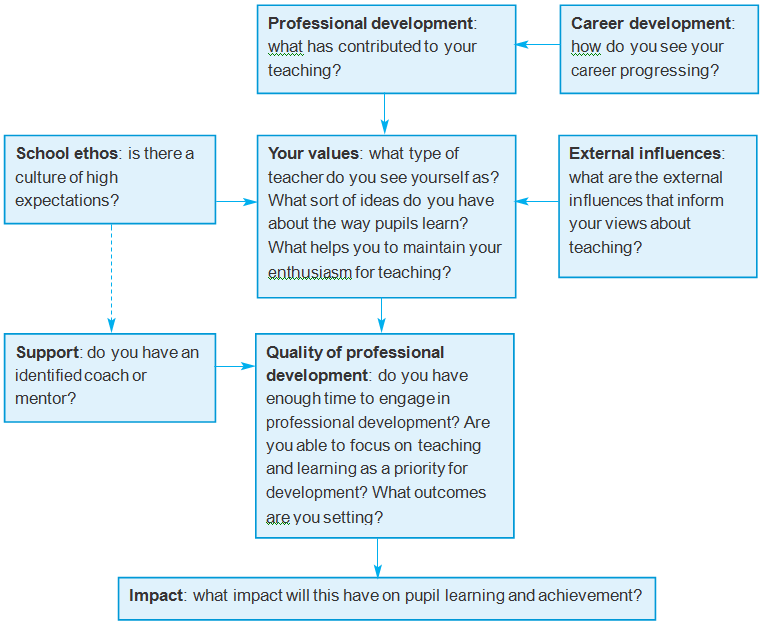Developing Your Teaching
- Aspects Of Engagement
- Assessment Overview
- Assessment for Learning Introduction
- Assessment for Learning Research Summary
- Building Capacity in School
- Classroom Management - Thinking Point
- Creating Engagement
- Developing Higher Order Scientific Enquiry Skills
- Developing Your Teaching
- Factors Affecting Lesson Design
- Fibonacci Project
- Group Talk - Benefits for Science Teaching
- Group Work - Practical Considerations
- Group Work - Research Summary
- Improving Reading - Research Summary
- Improving Writing - Research Summary
- Inclusive Teaching in Mathematics
- Inclusive Teaching in Science
- Modelling Introduction
- Purposes and characteristics of whole-class dialogue
- Questioning Research Summary
- Speaking and Listening in Group Work
- TESSA Working With Teachers
- Teaching Learning Developing Approaches to CPD
- Teaching Learning and Whole School Improvement
- The Importance of Speaking and Listening
- The Process of Lesson Design
- The educational value of dialogic talk in whole-class dialogue
- The impact of enquiry-based science teaching on students' attitudes and achievement
- Types Of Question
- Using Digital Video in Professional Development
- Whole Class Work - Research Summary
Developing your teaching: principles that encourage and stimulate learning
Teaching is a complex process. Complexity increases as we factor in assessment and pupil achievement; raising standards; the variety of experience that every classroom presents; and changes to curriculum models and subject specifications. Reviewing and refining the teaching process is necessary for teachers to be able to meet the demands of the changing classroom.
What you know as a teacher is not confined to your subject or ‘content’ knowledge. As a teacher you should expect to know about how the content is defined for the range of pupils that you teach and about the common misconceptions that are a feature of your subject and how to deal with them, e.g. by using appropriate models and analogies.
You will know about general principles and strategies of classroom management and organisation, about the pupils you teach, about the community in which your school is situated and about the aims and values of the education system in which you work.
As a teacher you make decisions all the time about how you will apply your different knowledges in order that pupils might learn effectively. You will identify appropriate learning outcomes and plan how best to ensure that these outcomes are to be met in the lessons you teach. This will involve selecting and preparing resource materials to enable all pupils to progress in their knowledge, skills and understanding.
The knowledge that you have about your subject, the curriculum and the decisions that you make will inform how you teach and how you organise the classroom to focus on pupils’ learning. Your knowledge about the pupils and their rates of progress will change your view of the teaching process for each class that you take: you will amend your ‘teacher actions’ to foster appropriate learning opportunities.
You may have determined from task 1 that you have one preferred model of teaching. Alternatively, you may have found that you are applying a variety of pedagogic approaches dependent upon the subject content and upon the pupils you are teaching.
Teaching for learning
The combination of knowledge, decisions and action should provide an impetus for effective teaching in the classroom. Effective teachers promote effective learning in a culture of high expectations. Pupils achieve more when lessons are well structured and sequenced (see video sequence 1c), when teachers make objectives clear and where pupils know what they are supposed to be learning. Effective teachers interact with pupils through targeted prompting and feedback and review learning and pupil progress regularly. They see the development of themselves as teachers as a continuous process.
Task 2 Effective teaching – effective learning 30 minutes
The diagram below describes the factors that contribute to effective learning. Each factor has associated questions and prompts for you to consider.
Jot down your responses to the questions and prompts as you work through the factors – how does your preferred teaching style encourage and stimulate learning?
Skilful teachers create effective learning situations and promote powerful learning. The impact of the teacher and the approaches to teaching that are selected cannot be overstated.
Some teaching models not only help to develop pupils’ understanding of the subject-matter being taught, but can also, if approached in the right way, provide pupils with a tool they can use to support their own learning – both now and later in life. Inductive teaching, for example, requires pupils to sort, classify information and generate hypotheses and/or rules. The process of thinking inductively can be a powerful tool for solving problems, as can deductive reasoning.
Teaching in these ways can provide pupils with skills and techniques they can use later in life. This will only happen, however, if the teacher not only teaches the lesson, but also makes explicit what they are doing through the use of metacognitive processes and by involving the pupils in ‘thinking through’ the lesson.
- This resource is part of the DfES resource "Pedagogy and practice: Teaching and learning in secondary schools" (ref: 0423-2004G) which can be downloaded from the National Archives http://webarchive.nationalarchives.gov.uk/20110809101133/nsonline.org.uk/node/97131 The whole resource (512 pages) can be downloaded as a pdf File:Pedagogy and Practice DfES.pdf
- The resource booklets, and many 'harvested' documents are available to download, generally in editable formats from the ORBIT resources, see Category:DfE.
- The videos from the accompanying DVDs are available: Video/Pedpack1 and Video/Pedpack2


